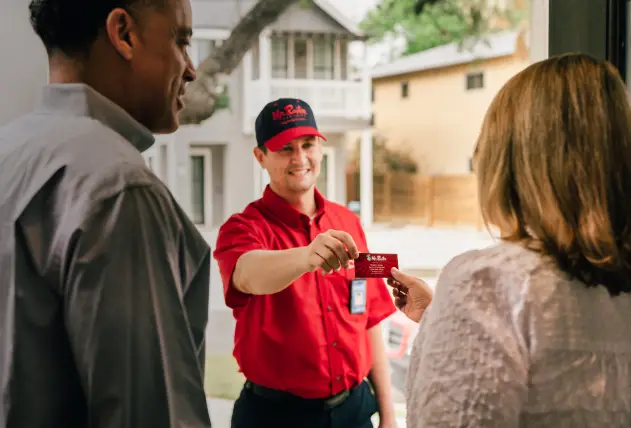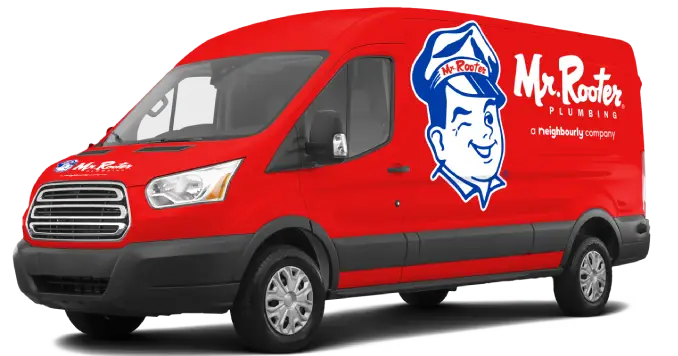
If you’ve reached this page, there’s a very good chance you’ve got a few liters of water sitting in your sink with no chance of drainage in the site. You may have tried a few tricks already, or you’re just starting your research on how to fix this problem - but good news. You’ll have to look no further! You’ve come to the right place. We’ll tell you everything you need to know in order to get yourself out of this sticky situation.
What Exactly Is a Clogged Sink?
Your worst nightmare. Just kidding! It could vary in degrees of severity so let’s take a look at what it takes for your kitchen sink to stop performing its regular draining functions. Typically, in Edmonton homes, the sinks in standard kitchens have the following parts:
- The basin and faucet - These parts need the least explanation because you probably interact with them directly on a daily basis. The basin is where you usually place your dirty dishes and you use the faucet to wash them.
- The supply lines - These are the pipes that connect the hot and cold water to your faucet. They also should have a valve that allows you to turn them on and off. This is most often used in an emergency (should you ever experience an unexpected spray, you can always duck down to find the shut-off valve to turn it off).
- The trap - We’ll need to familiarize ourselves with this part of the sink because it often plays an important role in a clogged sink. This is the pipe leading away from your sink towards sewage that’s bent in a bit of a “U” shape. This shape prevents sewer gas from entering your home by allowing a small amount of water to sit in the “U” blocking the gas from coming through.
Now that you know the most basic parts of your kitchen sink, let’s discuss what’s going on inside of them. The most common issue we find in homes with a clogged sink is a blockage inside of the trap. Because of its “U” shape that dips down, it requires much more force for anything to make it back upwards through the higher end of the “U”. If this is just water, no problem. However, pieces of food, harder items, and hair (hot rods, marbles, cutlery - yes, it happens) can pose a problem much too big for the trap to handle. Don’t despair just yet, we’ve got some things that you can try to do to get your sink back in working order.
What May Have Clogged Your Sink
You might be equally curious to find out what it is that got you in this situation in the first place. Although we do often find strange items in the sinks we unclog, here are the main causes of a clogged sink that you need to know.
- Foods that expand - Here you have it. The number one cause. Because we’re often using our kitchen sinks to help clean our plates, we tend to send some leftover bits of food down the drain. Some foods, however, do more damage than others. Among these are the foods that continue to absorb water the longer they’re exposed to it. Most often this includes rice and pasta.
- Grease - This is the next worst enemy of your kitchen sink. When grease is warm, it’s in a liquid state but as it hits the cold pipes of your kitchen sink’s drain, it cools and attaches to the inner walls of your drains. This results in a solid clog! One way to ensure that you don’t place more grease down the sink than your drain can handle is to dispose of grease in the garbage. Did you cook some bacon on the pan? Once it’s at room temperature, clean it up with a paper towel and throw it out. Grease is tricky though, there’s always little bits coming off dirty dishes when we wash them which will deposit in your drains over the years.
- Coffee grounds - They seem innocent but can wreak havoc in your kitchen sink. Coffee grounds remain in their state when they come into contact with water. That is, they don’t dissolve. Instead, they stick together forming clumps that combine with other culprits entering the pipes in your kitchen sink and - voila, a clog.
- Hair - Although more common in the shower and toilet drains, it still appears in sinks and we cannot stress enough how important it is that you ensure no hair (including that of your pets) enters your kitchen sink. Hair creates a nasty web that, when thick enough, catches anything that attempts to pass through.
Ways to Unclog Your Kitchen Sink by Yourself
As much as we truly love to come in and help our customers, we’re equally happy when we hear you’ve learned a great way to maintain the plumbing in your home on your own. Because at Mr. Rooter Plumbing of Edmonton, we find it important to educate our customers, we’re providing you with a list of great ways to try and unclog your kitchen sink before having to reach out to us.
- Boiling water. Sometimes, boiling water is able to defeat a nasty grease clog. Often when you wash your dishes in the sink, you might not even be noticing how much grease is coming off of your plates and into your drain. Although dish soap is powerful, we tend to rinse our dishes into the sink before applying soap. This grease can make it down your pipes and actually build up on the sides. Over time, the pipe will get narrower and narrower (similar to a clogged artery) and will stop allowing anything to pass through. In this scenario, hot water may help melt this grease clog away but only if the drain is slow. If the drain is completely clogged you’ll just have a sink full of hot water. It’s possible that you’ll have to repeat this process a few times. If you decide to do this keep in mind that any that is displaced by melting it with boiling water will deposit somewhere further down the drain.
- Plunger. We’ve placed this solution next in line because it can often work best in combination with boiling water. Even if you choose to use it without boiling water it can still be effective. Simply place your plunger in the drain hole of your sink and begin to push. Be careful not to wear clothes you like and be sure that no valuable items are near the process. Very often, the pressure caused by the plunger can actually cause dirty water to come spraying out the drain whole of your sink’s other basin! So be careful not to push too abruptly. This method may take some time but can be effective.
- Baking soda with vinegar. If you’re like us and aren’t comfortable using harsh chemicals that harm the environment (and your pipes), this is a more natural solution to apply to your kitchen sink’s drain. You’ll, of course, want to first scoop out that standing water in the basin before placing the baking soda and vinegar inside. This will prevent the solution from dissolving in the water and losing effectiveness. Next, pour about a cup of baking soda down the drain followed by an equal part of vinegar. After the bubbling stops, let it sit for about 20-30 minutes with the sink stopper in. Then remove the stopper and run your drain to see if the water has stopped sitting in the basin of your kitchen sink. Opinions on this method are mixed but it's a cheap thing to try that can’t really do any harm.
- Plumbing snake. If you don’t have one of these in your home, it may be a worthwhile small investment for you to consider. Snakes created for personal use can usually be purchased for under $20 at various department stores in Edmonton. They’ll come with instructions on the package depending on the one you buy, but the main process is the same. You’ll have to send the snake down into your sink and rotate the handle to bring the coil back up. If you’re lucky, the coil will come back up with the nasty blockage that was preventing your sink from draining.
- Open up the trap. This final do-it-yourself solution may take a little muscle or some tools because you probably don’t oil the nuts around the pipes in your sink and they may have developed some corrosion (depending on the material it is made of). Once you locate the “U” shaped trap under your sink place some sort of receptacle beneath it. This can be a bucket, an old bowl (anything that will catch dirty the water that you don’t want to clean off of the bottom of your cabinets!) Once that’s in place, grab a wrench or tool of your choice to unscrew the nuts on either end of the “U”. Once you start removing the trap, it’s very likely that the water that’s been sitting in your sink will start to drain so make sure that the bucket you’re using is big enough to contain it. You might also want to stuff a sponge or old cloth into the exposed drain pipe leading toward sewage to prevent any smells from entering your home. Now that you’ve got the trap removed, take a look inside to see if it’s clogged. It’s very likely that you’ll find the culprit at this point. Remove it and screw the trap back into place being very careful to put everything back together in exactly the same place as before to ensure you don’t experience any leaks.
Regular Prevention of Kitchen Sink Clogs
If you’ve found the magic method that unclogs your kitchen sink in our tips, we’re thrilled! Want to go through it again? Our guess is probably not! We’re sure you’re tired, ready to get cleaned up, perhaps a bit sore, and never want to go through this process again. We understand. That’s why our Edmonton plumbers created the Homeowner’s Ultimate Guide to Preventing a Clogged Drain. It contains valuable important tips that you absolutely need to know (and will even be surprised by) to ensure the drains in your home will always be in perfect working order. Hurry for no more clog work!
Fighting a Clog That Won’t Quit?
Although we really do care for our readers to succeed on their own, we understand that sometimes it’s impossible to do so without the proper tools and knowledge. If you’ve tried all the above methods and are still fighting a nasty kitchen sink clog, it’s time to reach out to a licensed plumber.
A certified plumber has the education and training to deal with the issues that your average person can’t. They’ll not only be able to solve your problem but will also tell you the root cause of your issue so that you can live worry-free in the future.
Mr. Rooter Plumbers of Edmonton are here to serve you in your time of need. Our plumbers will come to you anytime you call - they’re here for you 24/7 because plumbing emergencies can happen at the most inopportune times! Mr. Rooter offers a full guarantee on all parts and services and won’t leave your home until you feel fully comfortable with any changes and understand how to maintain the new plumbing in your home. It’s simple, we care for your peace of mind. Give us a call any time and we’ll be there to rescue you.

